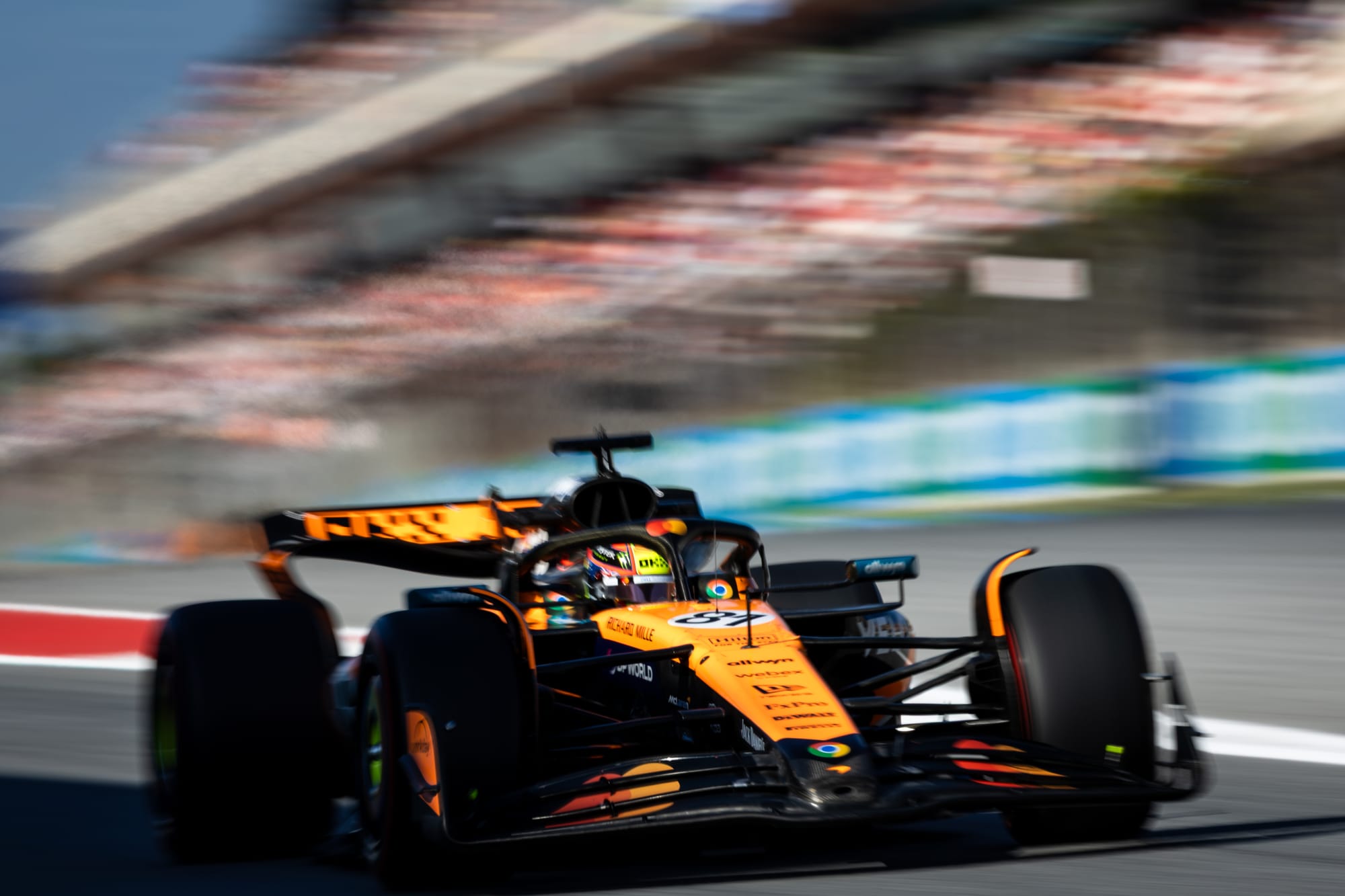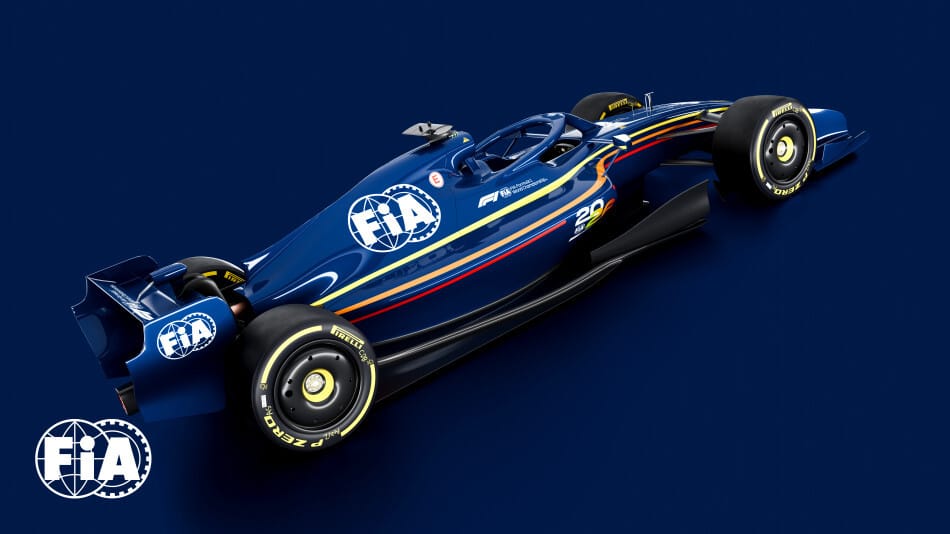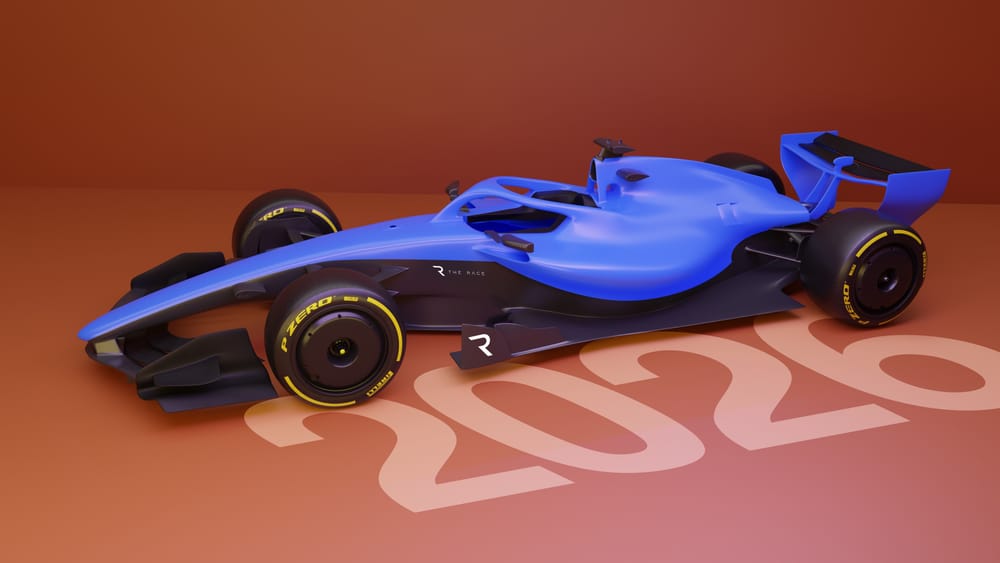Formula 1 teams will be explicitly banned from exploiting any tyre cooling tricks from next year via an intriguing new amendment to the 2026 technical regulations.
There has been an increased focus on tyre temperature management this season with pacesetter McLaren's main advantage widely accepted as being how it is able to keep its rubber cooler than its opposition can.
Rivals have been intrigued by how McLaren is so much better in this area, and have been scratching their heads trying to work out just what its secret is.
Suspicions that it could be doing something outside of the rules have been repeatedly shut down, however, with the FIA having completed numerous checks of the MCL39's wheel assemblies and braking systems – including a more detailed inspection after the Miami Grand Prix.
The governing body's stance has long been that McLaren's design is legal but clever – as whatever cooling it is doing is being done by airflow generated by the forward movement of the car.
However, that has not stopped theories that there is room for some form of exploitation within the regulations.
This idea gained some traction because, while the FIA's stance was that tyre cooling devices are not allowed, there is nothing definitive in the regulations that outlaws them.
The only reference to such systems is in Article 10.8.3 relating to the treatment of tyres, which forbids anything that heats or 'maintains' temperatures.
Some suggested that anything that helped cool the tyres was not actually covered in the regulations because this was technically different to 'maintaining' the heat.
In an intriguing move therefore, this week's World Motor Sport Council meeting has approved changes to F1's 2026 technical regulations that now close off what some felt was a grey area.
What has changed
The 10.8.3 article relating to tyre temperatures has been overhauled now for next season - as detailed below.
THE OLD WORDING
d. The only permitted type of tyre heating devices are blankets that comply with the design prescriptions listed in Article C10.8.4.
e. Any other device, system or procedure (except for driving of the car) the purpose and/or effect of which is to heat, or maintain the temperature of the hubs, or brakes, above the ambient air temperature, or to maintain their temperature if they are already warm, is prohibited.
THE NEW WORDING
Key revisions in bold
d. The only permitted type of tyre heating devices are blankets that comply with the design prescriptions listed in Article C10.8.4.
e. With the exception of air entering through the apertures defined in C3.16.6 and C3.16.16, and the blankets permitted in (d) above. Any device, system or procedure (except for driving of the car) whose purpose and/or effect is to heat, cool, or maintain the temperature of the complete wheels, hubs, or brakes is prohibited.
There are two minor but important changes here that will have an influence on any team that may have been seeking to exploit things in this area.
The first is that there is now a specific mention that any attempt to "cool" things is now outside of the regulations – which is a step beyond it just covering something that heated up or maintained temperatures.
Furthermore, the scope of the rules now includes the "complete wheels" rather than just the hubs or brakes – so the area where teams are not allowed to do anything trick has been expanded.
This could prevent the idea of teams channelling airflow to this wider area to find a way around the wording of the previous rules.
It is also interesting that a new article 3.17.1 that covers suspension fairings has also added a clause that these now: "must be internally sealed to prevent any internal airflow."
It would not be impossible to think that a team could channel airflow through the suspension fairings to feed cool air towards the wheel assemblies to help manage temperatures.
Closing the door

The changes to the regulations in this area are not necessarily a response to cover off anything that McLaren may or may not be doing.
Instead, it is fairly common practice for the FIA to tidy up regulations to prevent teams escalating developments in a certain area if grey areas have been exposed.
These are often discussed with the competitors themselves in meetings of the Technical Advisory Committee, where it is often agreed how best to close off certain complicated design avenues that may have opened up.
So the changes to the 2026 rules may well be more about preventing teams taking tricks to the next level next year rather than stamping out something that has been taking place already this season.
Energy harvesting tricks prevented?

The revised 2026 regulations tidy up a lot of areas.
One other notable addition is a clause that has been added that should prevent drivers needing to conduct wild energy harvesting tactics next year in qualifying sessions to get their battery to maximum power.
There has been talk of drivers needing to rev their engines hard through low-speed corners to help with harvesting.
This was something design genius Adrian Newey mentioned as likely.
"It's certainly going to be a strange formula in as much as the engines will be working flat-chat as generators just about the whole time," he said last year.
"So, the prospect of the engine working hard in the middle of Loews hairpin [in Monaco] is going to take some getting used to."
With it likely to be a challenge at some tracks without heavy braking zones to achieve the maximum charge of 8.5MJ per lap, freedom had already been put in the rules to limit this to 8MJ at some venues.
Now however an extra rule has been added that allows the FIA to pull this back to 5MJ when required.
The new Article states that this will happen: "at Competitions where the FIA determines that the harvesting strategies required to achieve the above limit are excessive."
The danger of drivers needing to drive in a strange way on qualifying out laps could pose some potential safety headaches if things got extreme, which is what the new 5MJ limit should help avoid.



